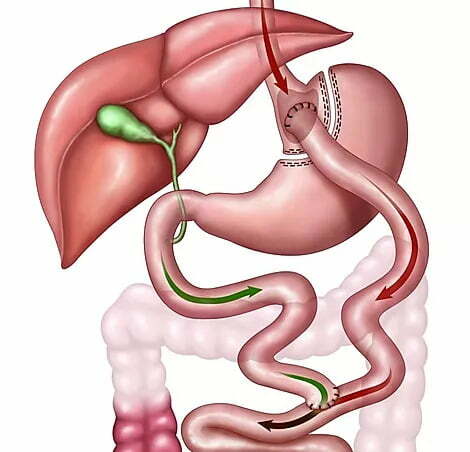Roux-En-Y Gastric Bypass
- First performed for weight loss in 1967, several long-term studies exist.
- 2nd most commonly performed bariatric operation in the United States (17.0%) and at The Better Weigh Center (45%)
- Small gastric pouch limits the size of a meal, yet the patient still feels “full” with the smaller amount of food.
- The intestinal bypass creates metabolic/gut hormone changes that allow the patient to lose more weight than they could with diet and exercise alone.
- Significant improvement/resolution of diabetes.
- This operation often helps to enforce better eating habits as patients often feel “sick” if they eat certain foods.

- “Dumping Syndrome”: This occurs if the patient eats foods (solids or liquids) containing large amounts of sugar (usually more than 10g). They will begin to feel clammy (sweaty) and their heart starts beating very fast (tachycardia). This is followed by severe, crampy abdominal pain. The patient will often feel very nauseated and may feel like they need to have a bowel movement. These symptoms will usually last for 20-30 minutes and then will go away. While “Dumping Syndrome” is not dangerous, it is very uncomfortable and for many patients the fear of “dumping syndrome” helps keep them away from tempting sugary foods and liquids. Patients can still have sugar after a gastric bypass, they just have to limit the amount. For example, a patient could eat a Hershey’s Kiss without a problem, but they would likely get sick with a candy bar.
- Greasy food often makes bypass patients feel very nauseated.
- Many patients become lactose intolerant after a gastric bypass so things like milk, ice cream, etc can make them uncomfortable if taken in larger amounts.
- Patients should expect to lose around 70% of the extra weight they are carrying (35% of body weight) after this operation.
